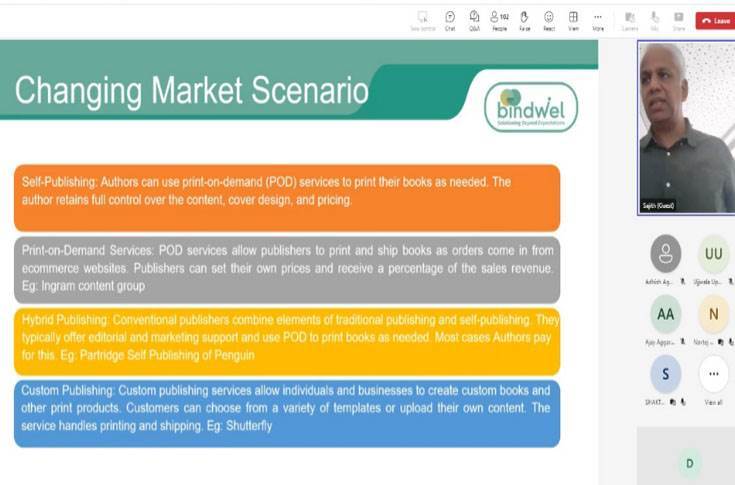Insight, Bindwel webinar discusses book printing, binding trends
Insight and Bindwel organised a webinar on the future of book printing and binding: trends and innovation to watch in 2024 on 24 January.
24 Jan 2024 | By Noel D'Cunha
The webinar explored the thriving landscape of the book printing industry and dived into the expansive realm of digital print production, a sector poised for significant growth. It addressed the ever-evolving challenges faced by book production companies and underscored the imperative of staying abreast of the latest trends and technologies.
The collaborative expertise of Insight and Bindwel, market leaders in digital printing and binding, guided the attendees on leveraging innovative technologies for profitability and distinctiveness in a competitive market.
The webinar especially focused on the current scenario in book production; the need for short-run book printing; digital printing solutions and digital binding solutions.
Ajay Aggarwal of Insight discussed Atexco, the book printing machine, with the entire process of printing, has been reduced to just literally two steps. One step is printing. The second step is binding and trimming.
Aggarwal said, “Atexco debunks the myth that digital is for very small runs, and cannot compete with offset. The press can print at a speed of around 50,000 A4 pages at the minimum and can go up to 1-lakh as well.”
Aggarwal explains the crossover point where offset printing of books becomes cheaper than digital printing. For toner, it is around 300 copies, while with Atexco, it is anything between 1,500 to 5,000 copies depending on the ink consumption of jobs.
P Sajith of Bindwel discussed the changing book market scenario in India. He said the market is moving towards self-publishing, print-on-demand and hybrid printing.
Sajith said, “Publishing can be done using conventional offset printing or digital printing depending on the number of books needed. If the quantity is over 5,000 to 50,000 or more, offset printing is the best option. However, to meet just-in-time demands of smaller quantities such as 50 or 100 books, digital inkjet printing is more suitable. Custom publishing is a service that allows individuals and businesses to create personalised books or print products.

P Sajith of Bindwel discussed the changing book market scenario in India
Sajith also discussed the basic requirements for binding. Bindwel manufactures a range of machines for both commercial and digital printing, as well as a unique hybrid model that can use both office and digital printers.
“As global leaders in this segment, we believe that our Indian customers would benefit from having the opportunity to use both offset printing machines and digital printers on the same premises. This would allow them to manage with just one binder,” he said.
Sajith said Bindwel has a manufacturing facility in Bangalore, and all are welcome to visit us. Bindwel offers both commercial and offset printing, with supporting post-processing systems. Additionally, Bindwel has a digital system that can bind single-copy books on demand and upwards. The machine can also produce each book as a unique product. For instance, if you need four copies, the machine will produce four different books based on your request.
During the Q&A session, when asked about the auto settings based on the spine of the book, Sajith clarified that the settings are determined not only by the spine of the book but also by the size of it. Therefore, every aspect can be a variable.
To another question on the book printing trend, Sajith said, “In the world of book printing, there has been a reverse trend in the last two years. Printed books have started to grow in popularity, and it seems that the pandemic has played a role in this shift. The total number of books printed globally is increasing, but the number of titles is also rising. This means that instead of printing one book in large quantities, publishers are now printing a greater variety of titles in smaller quantities, ranging from 10 to thousands of copies. This presents an opportunity for the industry to adapt to changing consumer preferences.”












 See All
See All